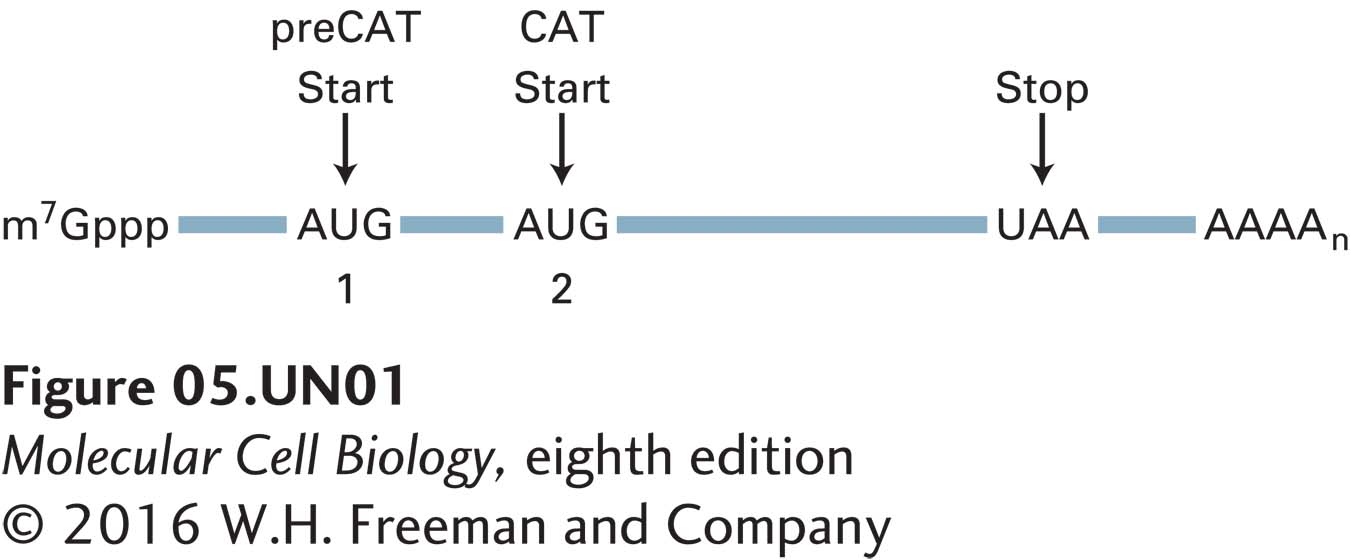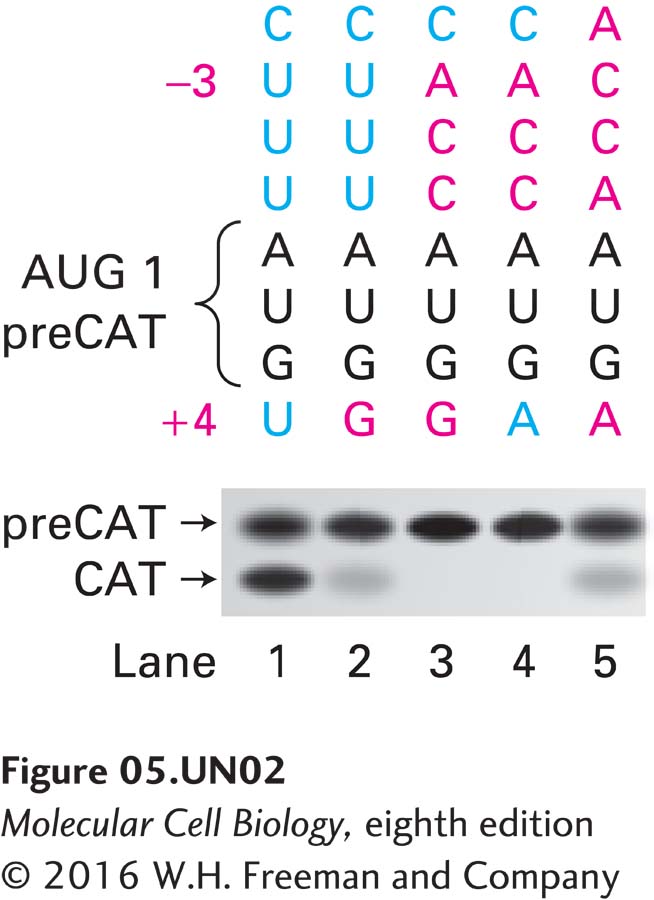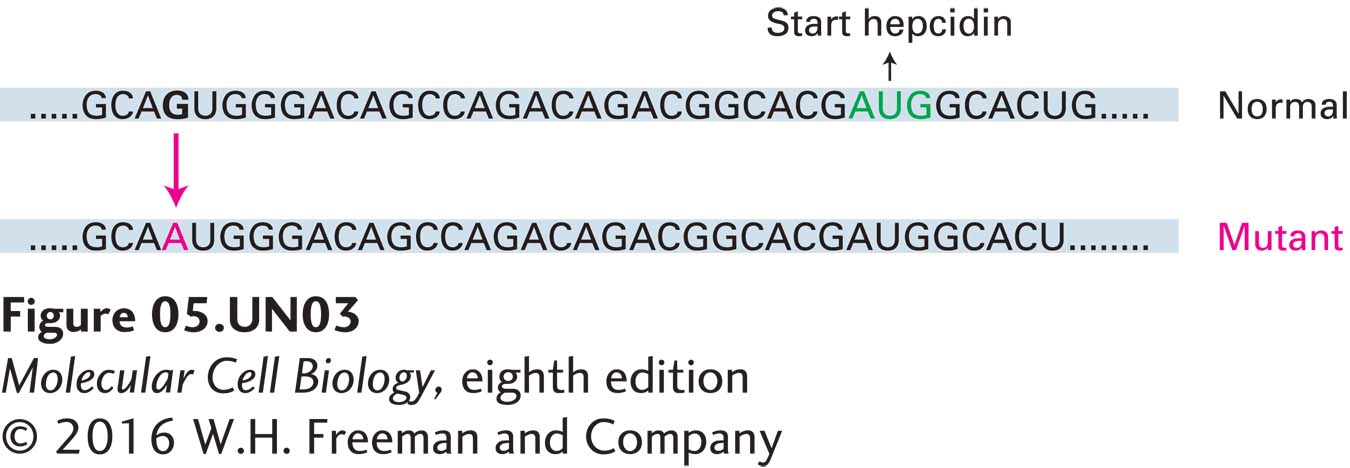
Chapter 5. Leaks in Translation
Introduction

Analyze the Data 5-1: Leaks in Translation
Protein synthesis in eukaryotes normally begins at the first AUG codon in the mRNA. Sometimes, however, the ribosomes do not begin protein synthesis at this first AUG but scan past it (leaky scanning), and protein synthesis begins instead at an internal AUG. In order to understand what features of an mRNA affect the efficiency of initiation at the first AUG, studies have been undertaken in which the synthesis of chloramphenicol acetyltransferase was examined. Translation of its message can give rise to a protein referred to as preCAT or a slightly smaller protein, CAT (see M. Kozak, 2005, Gene 361:13). The two proteins differ in that CAT lacks several amino acids found at the N-terminus of preCAT. CAT is derived not by cleavage of preCAT, but instead by initiation of translation of the mRNA at an internal AUG:

a. Results from a number of studies have given rise to the hypothesis that the sequence (−3)ACCAUGG(+4), in which the start codon AUG is shown in boldface, provides an optimal context for initiation of protein synthesis and ensures that ribosomes do not scan past this first AUG to begin initiation instead at a downstream AUG. In the numbering scheme used here, the A of the AUG start codon is designated (+1); bases 5′ of this are given negative numbers [so that the first base of this sequence is (−3)], and bases 3′ to the (+1) A are given positive numbers [so that the last base of this sequence is (+4)]. To test the hypothesis that the start site sequence (−3)ACCAUGG(+4) prevents leaky scanning, the chloramphenicol acetyltransferase mRNA sequence was modified and the resulting effects on translation assessed. In the following figure, the sequence (red) surrounding the first AUG codon (black) of the mRNA that gives rise to the synthesis of preCAT is shown above lane 3. Modification of this message is shown above the other gel lanes (altered nucleotides are in blue), and the completed proteins generated from each modified message appear as bands on the SDS-polyacrylamide gel below. The intensity of each band is an indication of the amount of that protein synthesized. Analyze the alterations to the wild-type sequence and describe how they affect translation. Are the positions of some nucleotides more important than others? Do the data shown in this figure provide support for the hypothesis that the context in which the first AUG is present affects efficiency of translation from this site? Is ACCAUGG an optimal context for initiation from the first AUG?

b. What are some additional alterations to this message, other than those shown in the figure, that would further elucidate the importance of the ACCAUGG sequence as an optimal context for synthesis of preCAT rather than CAT? How would you further examine whether A at the (−3) position and G at the (+4) position are the most important nucleotides to provide context for the AUG start?
c. A mutation causing a severe blood disease has been found in a single family (see T. Matthes et al., 2004, Blood 104:2181). The mutation, shown in red in the figure below, has been mapped to the 5′-untranslated region of the gene encoding hepcidin and has been found to alter the gene’s mRNA. The shaded regions indicate the coding sequence of the normal and mutant genes. No hepcidin is produced from the altered mRNA, and lack of hepcidin results in the disease. Can you provide a reasonable explanation for the lack of synthesis of hepcidin in the family members who have inherited this mutation? What can you deduce about the importance of the context in which the start site for initiation of protein synthesis occurs in this case?

Activity results are being submitted...